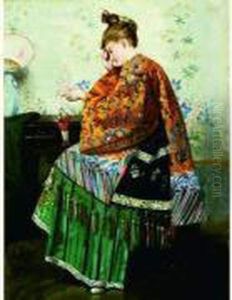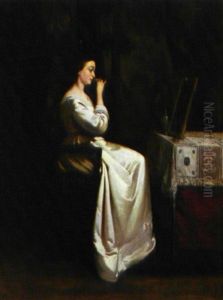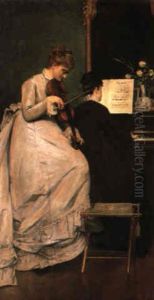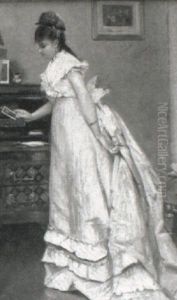Louis Charles Verwee Paintings
Louis Charles Verwee was a Belgian painter born on January 22, 1832, in Kortrijk, Belgium. He was part of a family of artists; his father was the painter Charles-Louis Verwee, and he had two brothers who were also involved in the arts. Louis Charles was primarily known for his genre paintings, which often featured elegant scenes of bourgeois life and domestic interiors. His style was influenced by the 17th-century Dutch masters, as well as by contemporary French painting, which he became acquainted with during his travels.
In his early years, Verwee received his initial art education from his father before enrolling in the Academy of Fine Arts in his hometown. His work quickly gained recognition for its fine detail, warm atmosphere, and the gentle sentiment of the scenes he chose to depict. Louis Charles Verwee's paintings often reflected a sense of tranquility and a nostalgic perspective on everyday life, which made them popular among the bourgeoisie of his time.
Though he traveled to France and was influenced by the Barbizon school and the realism movement, Verwee's work remained primarily in the traditional and academic domain. He was quite successful during his lifetime, exhibiting his work in Belgium as well as abroad, and he received numerous commissions from wealthy patrons.
Louis Charles Verwee's health began to deteriorate in the later years of his life, which affected his productivity. He passed away on December 13, 1882, in Brussels. His legacy continued through his son, Alfred Verwee, who also became a well-known artist. Throughout his career, Louis Charles Verwee contributed to the Belgian art scene of the 19th century, and his works are still appreciated today for their charm and historical value.


![[la Lecture.]](https://www.niceartgallery.com/imgs/1078586/s/louis-charles-verwee-la-lecture-fde7367e.jpg)










